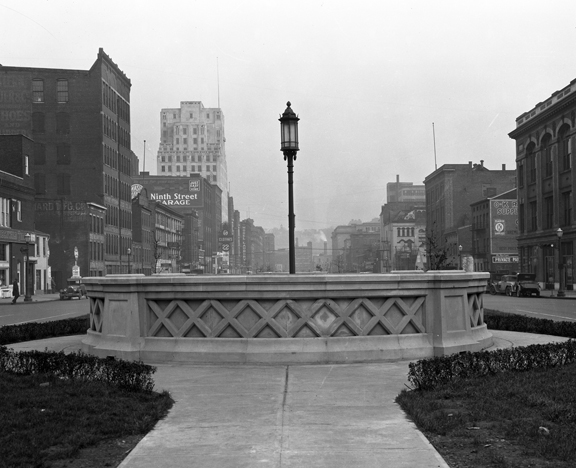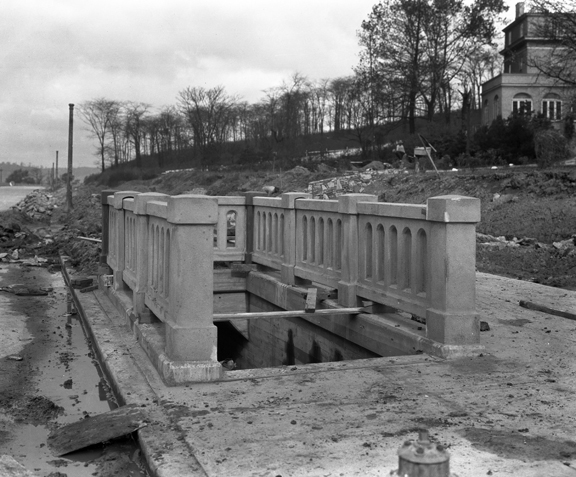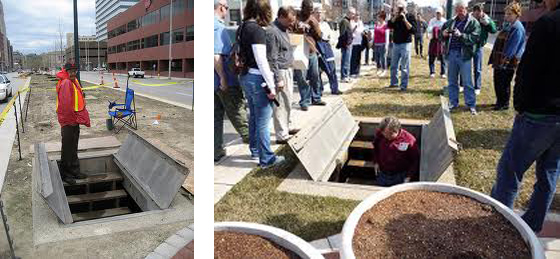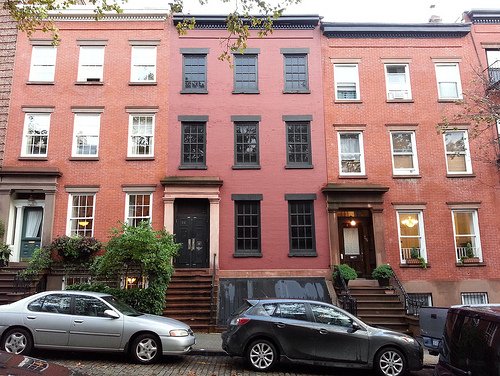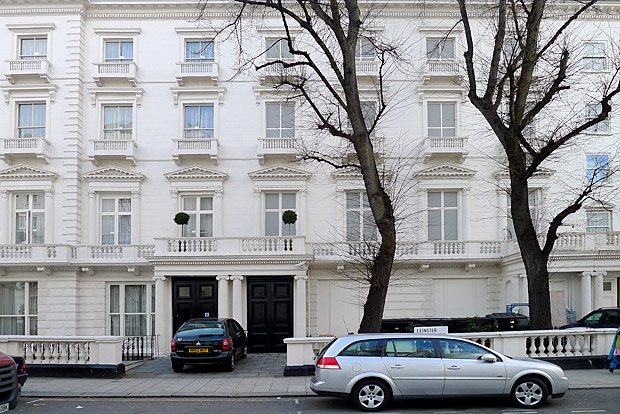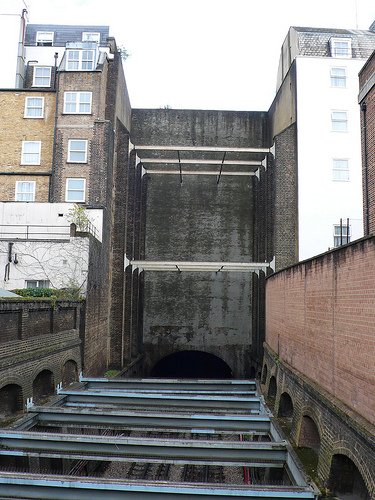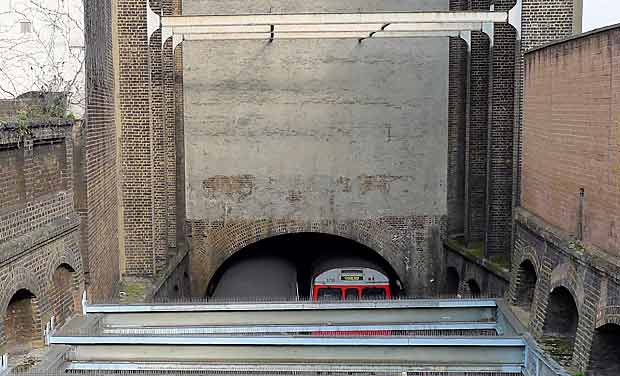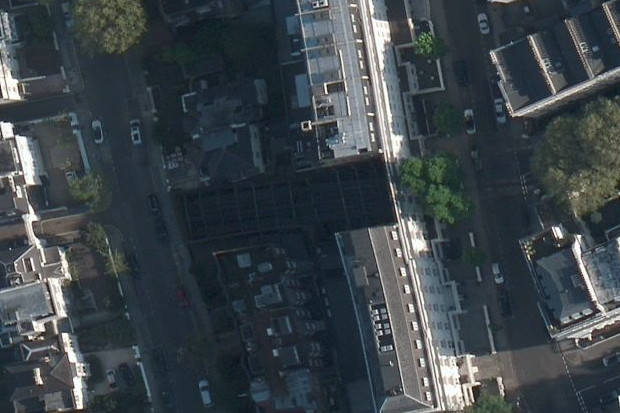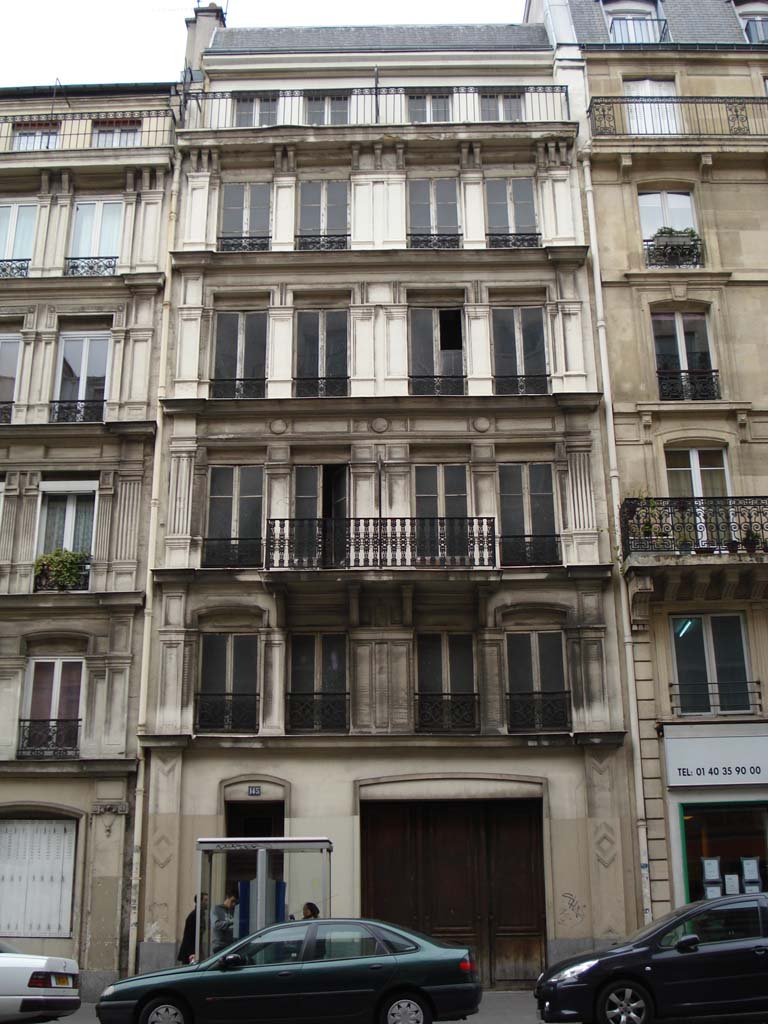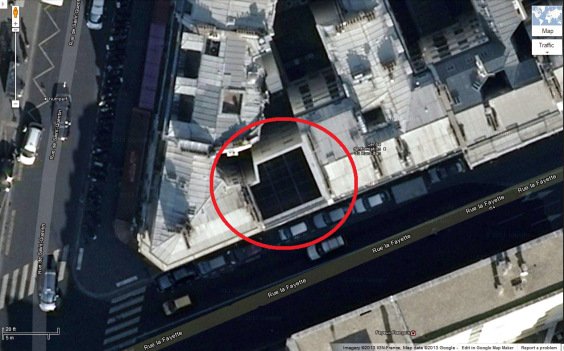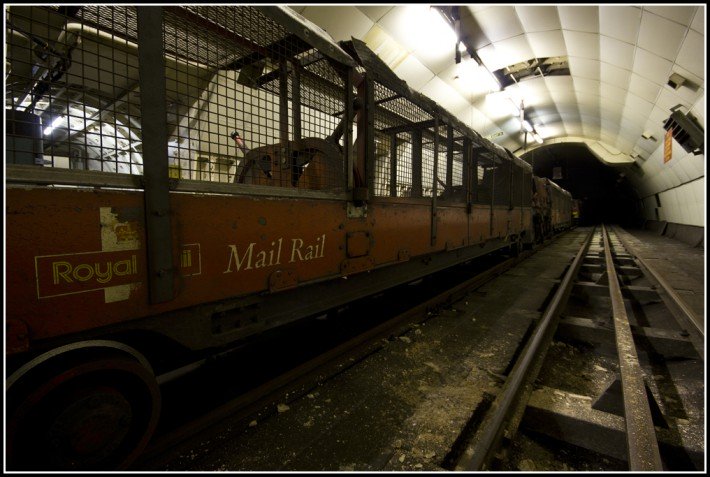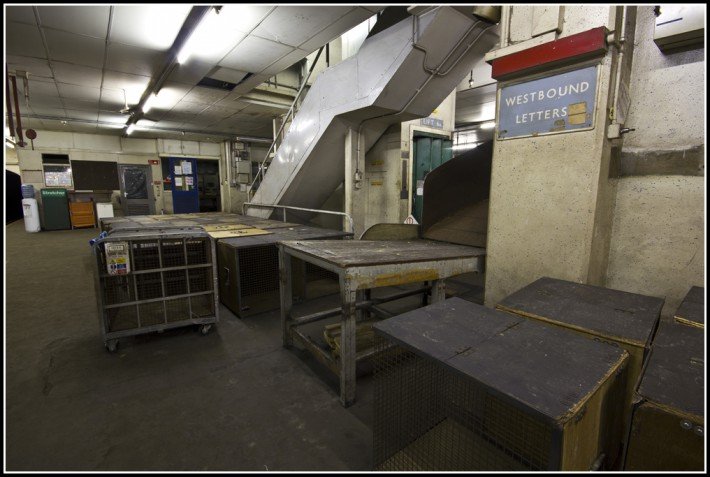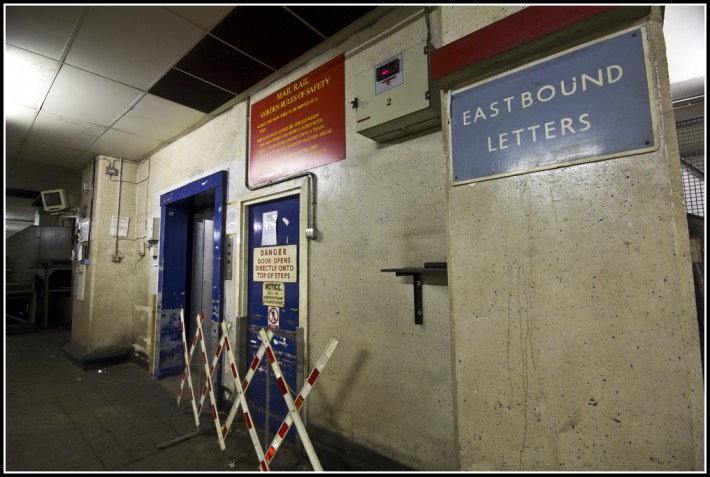By Angela Vanderbilt
The story of abandoned subway stations and tracks hidden beneath busy city streets is not unique to Cincinnati. Other large cities, such as New York, London, and Paris have similarly mysterious and intriguing stories to tell. An article I recently read in The New York Times introduced me to this underground world of hidden subway ventilation shafts disguised by false building facades, with doors from which people occasionally exit, but never seem to enter. Some of these subterranean secrets are in use, while others have been abandoned like Cincinnati’s own subway stations beneath Central Parkway.
What’s fascinating is the effort made to disguise these facilities, to blend them in with the neighboring buildings. While it seems a logically aesthetic means of making the utilitarian more appealing, some have argued that the cities in which these structures are located are trying to hide a deep secret. For comparison, consider the Cincinnati subway – when the subway and Central Parkway were first being constructed, the ventilation chimneys and the entrances to the below-ground stations were nicely appointed with decorative stonework.
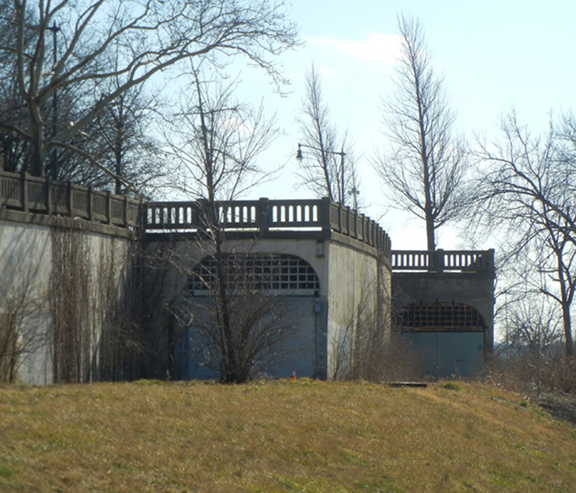 Today, metal doors in the sidewalks along Liberty Street and Central Parkway, and steel doors and grates enclosing the tunnel openings along I-75 near the Hopple Street Viaduct, are all that remain visible of the subway to give passers-by cause for speculation as to what lies beneath or behind these doors.
Today, metal doors in the sidewalks along Liberty Street and Central Parkway, and steel doors and grates enclosing the tunnel openings along I-75 near the Hopple Street Viaduct, are all that remain visible of the subway to give passers-by cause for speculation as to what lies beneath or behind these doors.
But in New York, London, and Paris, clever preservation commissions and city transit leaders have provided a more pleasant disguise, leaving local residents completely unaware of what was behind the closed doors of 58 Joralemon Street in Brooklyn, 23 and 24 Leinster Terrace in Bayswater, London, or 145, Rue La Fayette in Paris. Personally I would rather see a well maintained Greek Revival or Edwardian building façade than an empty space in the middle of a historic streetscape with a large metal grate from which hot air is expelled. So I invite you to read along, view the images, and decide for yourselves!
The article in The New York Times describes a Greek Revival townhouse nestled in the midst of a row of brownstones located on a quiet street in Brooklyn, NY. The townhouse at #58 Joralemon Street is well maintained despite the darkened windows through which no light ever shines. A peek through the crack in the front door reveals no one is home. In fact, it reveals this is not a home at all, but a large empty space with a concrete floor and“catwalks going back and forth this way and that, and somewhere down below the trains going by”, as quoted in the article by an area resident who was fortunate to be given a peek inside the “Shaft House”, the name by which those living in the neighborhood refer to the townhouse.
The Shaft House is actually an emergency exit and ventilation fan plant for subway tracks 4 and 5 of the Interurban Rapid Transit Company and is maintained by New York City Transit. The townhouse was purchased by the city in 1908 to house the ventilation fans. Large steel louvered shutters, from which hot air and smoke would randomly pour out into the street, were fitted into the window cases. Behind the pleasant Greek Revival façade, the interior decorating consists of electrical panels, switches and behind a steel door, catwalks that cross over a nine-story drop to the subway tracks below.
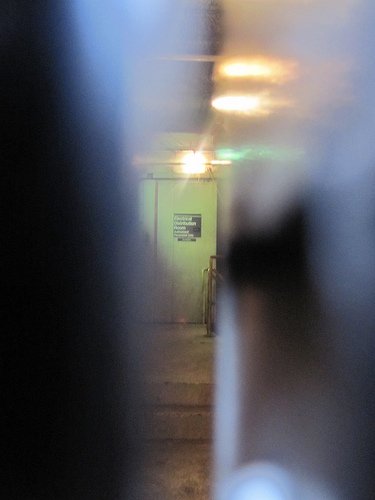
Source: Heather Quinlan, Flickr, http://www.flickr.com/photos/
heggieq/4519128092/in/set-72157623848942178
The restoration of the 1847 façade to its historical appointments is owed to the Landmarks Preservation Commission and a local community association. Both entities made recommendations to the city, who owns the property, to spruce up the aging façade which included the removal of the unsightly steel ventilation shutters. “Windows” were installed made of sheets of Lexan – a hard plastic resin that is used for such things as sports helmets and windshields – on which wooden mullions were placed to create panes. New ventilation shafts were installed to expel the air out through the roof. In addition to being more pleasant to look at, New York City Transit considers the quaint façade to be a security benefit, since the building now blends seamlessly in with the row of brownstones – a useful disguise in our post-9/11 world for what could be a potential target to those wishing to inflict harm on the city. The article even notes that neighbors occasionally spruce it up with flower boxes under the windows.
Other cities with false facades disguising subway ventilation systems or emergency exists include London and Paris, among others. In London’s Bayswater neighborhood, two townhouses located at #23 and 24 Leinster Terrace are simply a 5-foot thick façade, complete with windows, balconies and front doors, but with no back or roof to the buildings at all. The two townhouses were razed in the 1860s to gain access for construction of a subway tunnel that was to pass through Paddington and Bayswater.
Once the tunnel was finished and covered over, the townhouses were not “completely” rebuilt. Only the facades were reconstructed, disguising the ventilation system for the steam-powered subway trains running through the tunnel below.
In Paris, a Haussman style façade disguises a Metro ventilation system, nestled between buildings at 124 Rue La Fayette. Information regarding this structure may be found on several internet sites, such as Web Urbanist, all providing an aerial view for doubters, courtesy of Google Maps.
Another hidden subway treasure in London is the now defunct mini-rail and stations that provided mail delivery service for the Royal Mail Rail between Paddington and Whitechapel. In service for some 85 years, it was closed in 2002 when it had become too costly to maintain.
The station and its closing were kept very hush-hush, with very few people aware of the postal services happening beneath them. The stations and train cars were simply left as they were, with mail cars still on tracks and phones still on desks.
Access points for the stations and tunnels are located either in functioning mail depots or are less aesthetically disguised than the Leinster vents, with concrete walls blocking entry. Savvy urban explorers from the blog Silent UK managed to gain access to the stations and provided images of the station that seems frozen in time, kind of like the feeling you get when waiting in line at the post office to mail Christmas packages, or tax returns.
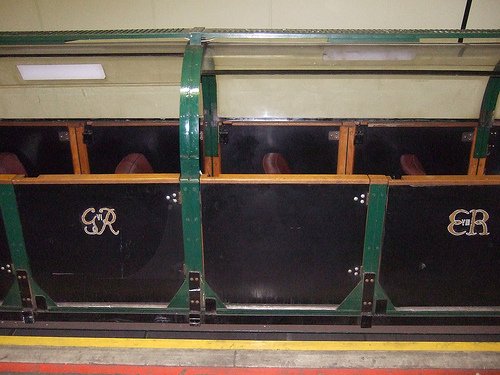
Passenger cart possibly for transporting Royal Mail Rail workers to-and-from stations. Source: Richard Pope, Flickr http://www.flickr.com/photos/
memespring/311142664/in/set-72157594400450387)
Curious to know more about what subterranean treasures your city may hide behind false facades or gated metal doors that seem to lead to nowhere? Even those which are in plain view are worth investigating a little closer. Learn more about the city you live in, or a city you are interested in visiting. Research its history, and learn more about the stories which make it famous, and those which make it infamous, such as a subway that was never completed but which still exists beneath busy city streets. Keep your eyes and imagination open to the built environment around you. Who knows what you’ll discover!
Sources:
http://www.nytimes.com/2004/12/26/nyregion/thecity/26shaf.html?pagewanted=2&_r=1
http://www.messynessychic.com/2013/01/29/the-fake-townhouses-hiding-mystery-underground-portals/
http://weburbanist.com/2013/04/29/buildings-that-dont-exist-fake-facades-hide-infrastructure/
http://www.silentuk.com/?p=2792
http://www.messynessychic.com/2012/11/09/londons-subterranean-secret-the-forgotten-mail-train/
 This project is funded by a grant for $60,669 through the Library Services and Technology Act, administered by the State Library of Ohio.
This project is funded by a grant for $60,669 through the Library Services and Technology Act, administered by the State Library of Ohio.


